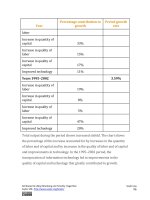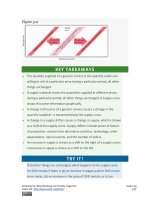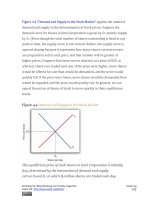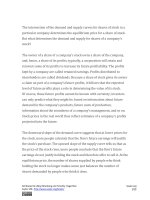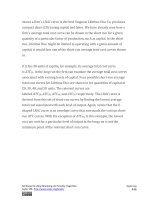Authors libby rittenberg 897
Bạn đang xem bản rút gọn của tài liệu. Xem và tải ngay bản đầy đủ của tài liệu tại đây (376.32 KB, 1 trang )
2,500 boats, as shown in the table in Figure 17.6 "The Mutual Benefits of
Trade". Roadway thus emerges with 4,500 trucks (the 7,000 it produces at
B minus the 2,500 it ships) and 9,500 boats. It has 500 more of each good
than it did before trade. The precise amounts of each good shipped will
depend on demand an supply. The essential point is that Roadway will
produce more of the good—trucks—in which it has a comparative
advantage. It will export that good to a country, or countries, that has a
comparative advantage in something else.
Figure 17.6 The Mutual Benefits of Trade
Roadway and Seaside each consume more of both goods when there is
trade between them. The table shows values of production before trade
(BT) and after trade (AT). Here, the terms of trade are one truck in
exchange for one boat. As shown in Panel (a) and in the exhibit’s table,
Roadway exports 2,500 trucks to Seaside in exchange for 2,500 boats
and ends up consuming at point C, which is outside its production
possibilities curve. Similarly, in Panel (b), Seaside ends up consuming
at point C′, which is outside its production possibilities curve. Trade
Attributed to Libby Rittenberg and Timothy Tregarthen
Saylor URL: />
Saylor.org
897
